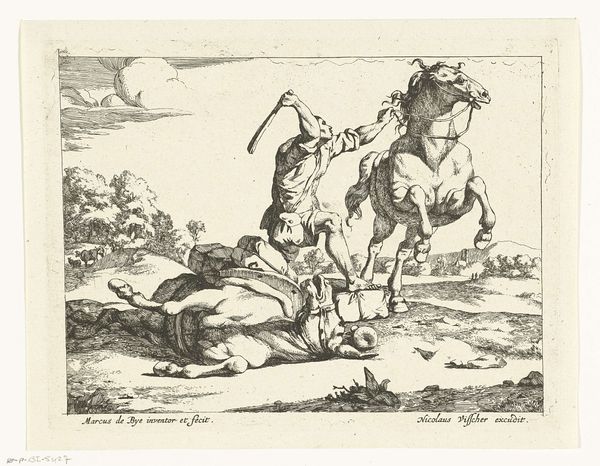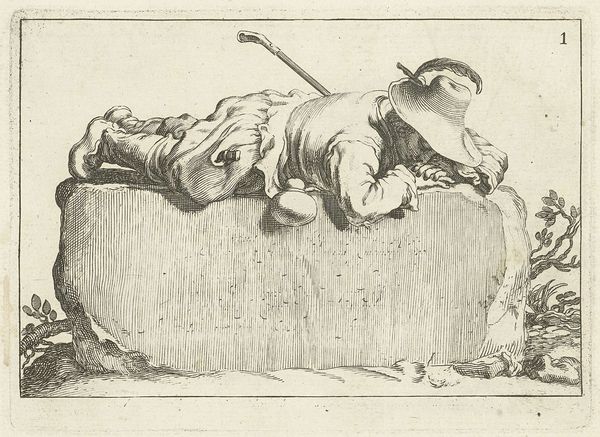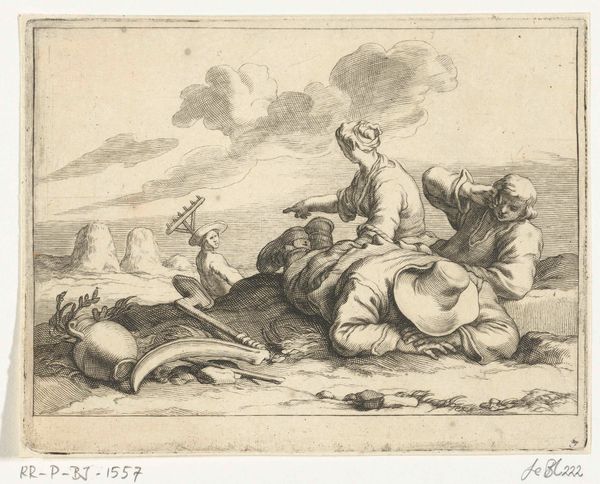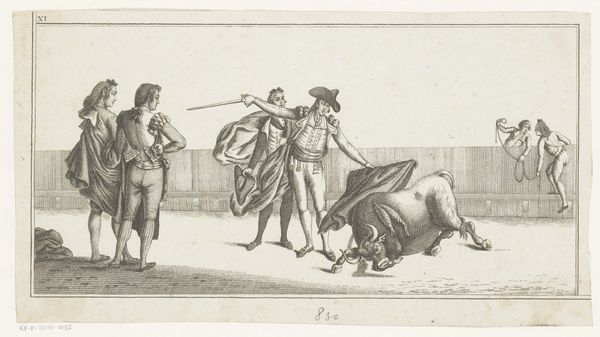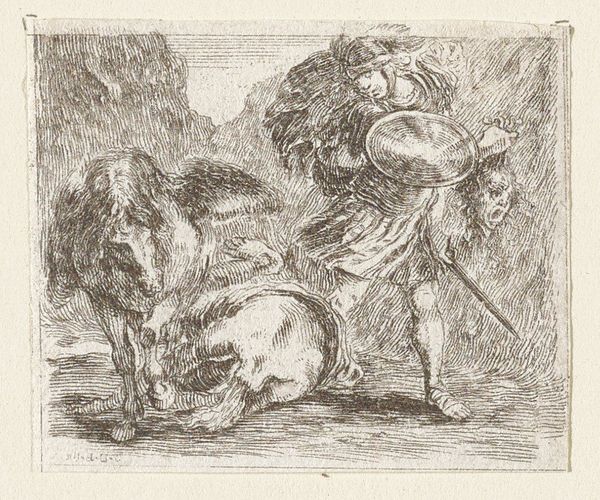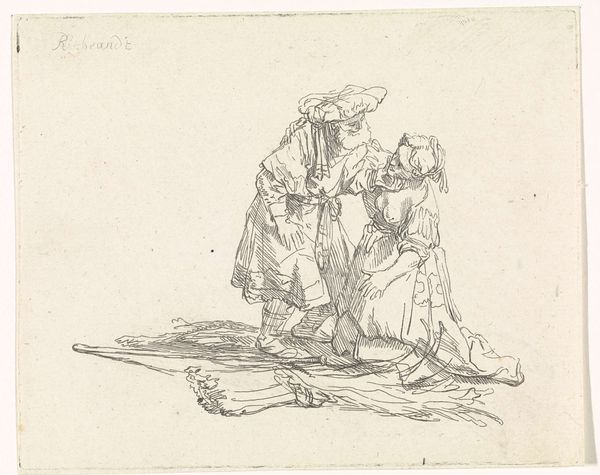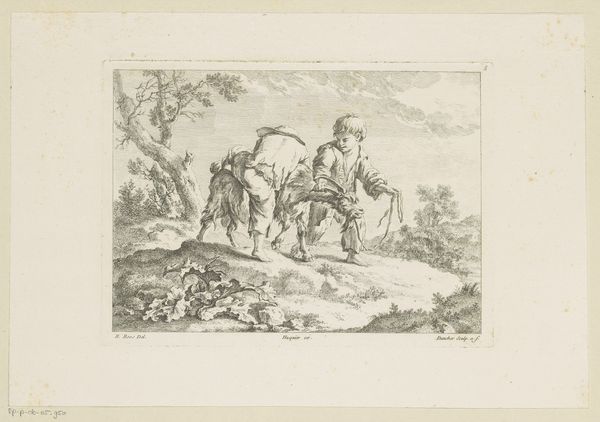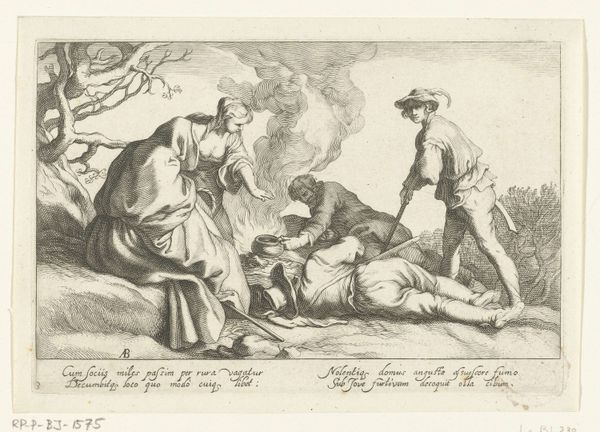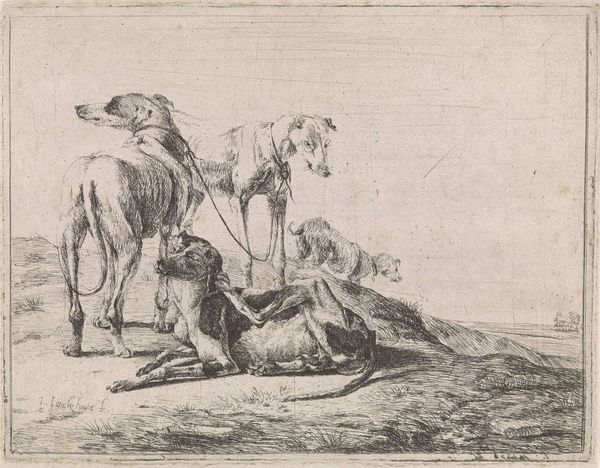
drawing, print, etching
#
drawing
#
imaginative character sketch
#
quirky sketch
#
dutch-golden-age
# print
#
etching
#
pencil sketch
#
cartoon sketch
#
figuration
#
personal sketchbook
#
ink drawing experimentation
#
pen-ink sketch
#
sketchbook drawing
#
genre-painting
#
storyboard and sketchbook work
#
sketchbook art
Dimensions: height 90 mm, width 118 mm
Copyright: Rijks Museum: Open Domain
Frederick Bloemaert’s etching, "The Young Thief," presents a tableau steeped in complex symbolism. We see a woman with a basket, a boy seemingly stealing something, and a child absorbed with what seems to be a wind instrument. Here, the act of theft is not merely a crime but a symbolic transgression, echoing the myth of Prometheus stealing fire, a motif of defiance against divine order. The wind instrument played by the younger child can be seen as a symbol of pastoral innocence corrupted, not unlike the pipes of Pan, often associated with primal, untamed aspects of human nature. Consider how these symbols reappear—the thief in Renaissance paintings as a commentary on social justice, or musical instruments in Dutch still lifes as vanitas symbols, reminding us of life's fleeting nature. The emotional charge of such imagery lies in its ability to tap into our collective memory, resonating with our subconscious understanding of morality, loss, and transgression. It highlights the cyclical nature of human experience, where symbols of sin and innocence are continuously re-evaluated across time and culture.
Comments
No comments
Be the first to comment and join the conversation on the ultimate creative platform.

